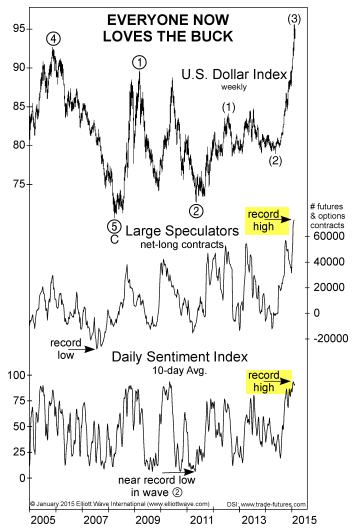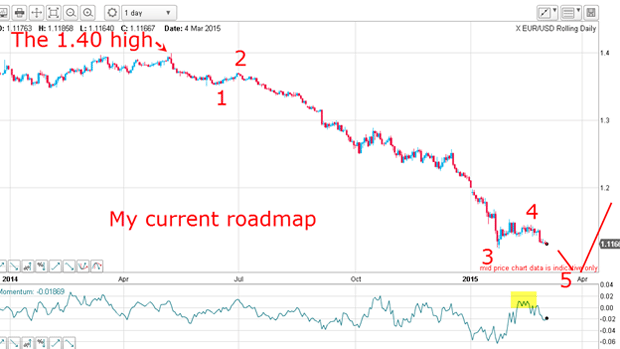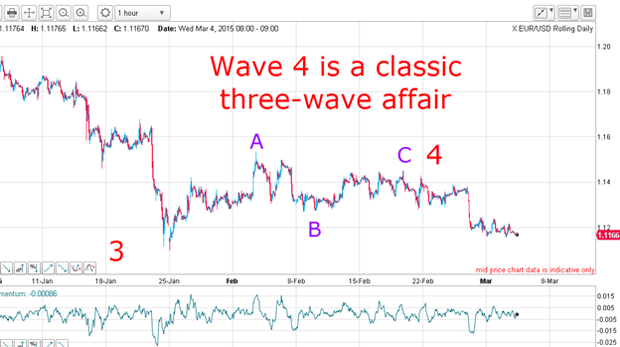When the euro breaks out of this trend, I expect it to rocket
That the euro has fallen ahead of European money printing is expected, says John C Burford. But a sudden reversal will take many by surprise.
Last year, I said that if and when the European Central Bank got around to doing their own version of QE (AKA money printing), my money would be on the euro reaching a bottom early, then engaging in a strong rally phase.
I had history on my side; that is precisely what happened to the US dollar when the Federal Reserve's QE scheme got under way. The dollar ended higher at the conclusion of its third QE programme than when its first QE programme started.
Doomsters figured that the creation of all those extra dollars should have made the currency's value plummet, but markets have a habit of flying in the face of convention wisdom.
MoneyWeek
Subscribe to MoneyWeek today and get your first six magazine issues absolutely FREE

Sign up to Money Morning
Don't miss the latest investment and personal finances news, market analysis, plus money-saving tips with our free twice-daily newsletter
Don't miss the latest investment and personal finances news, market analysis, plus money-saving tips with our free twice-daily newsletter
So, with the ECB days away from starting its massive QE programme, I am asking whether the euro is close to a reversal.
Eurozone QE was announced late last year, but the market has been convinced there would be a QE operation for some time before that.
This conviction that money printing would drive down the value of the euro drove down the value of the currency before the money printing even began. The euro fell from USD$1.40 last May to $1.11 last month a steep decline of over 20%.
And the headline-grabbing stand-off between Greece and the rest of the eurozone is hardly helping the euro.
Hedge funds are slow to catch reversals, so that's where we trade
The chart below shows how the US dollar index (a measure of the value of the dollar against the currencies of its major trading partners), the Daily Sentiment Index (a survey of the sentiment of professional investors) and the large speculators net-long contracts (which shows the number of 'long' positions being taken by hedge funds) are hitting record highs:

Chart courtesy www.elliottwave.com
Most hedge funds are trend-followers, and they have clearly been on the right side of the market up until now. Their weakness, however, is that they are very slow to catch market turns.
This means hedge funds will have profited by going 'long' the dollar versus the euro in recent months, and accumulated long positions in the dollar in that time. But when the market turn arrives, they will have to sell this backlog of long dollar positions to avoid losses.
Hedge funds' huge long-dollar positions translate into huge potential euro buying. That is the scenario I am working on and preparing to go long the euro, eventually.
Here is the latest commitment of traders data:
| (Contracts of EUR 125,000) | Row 0 - Cell 1 | Row 0 - Cell 2 | Row 0 - Cell 3 | Open interest: 431,217 | ||||
| Commitments | ||||||||
| 45,511 | 223,247 | 6,845 | 343,315 | 116,354 | 395,671 | 346,446 | 35,546 | 84,771 |
| Changes from 02/17/15 (Change in open interest: -7,194) | ||||||||
| -1,664 | -9,510 | -655 | -5,886 | 4,795 | -8,205 | -5,370 | 1,011 | -1,824 |
| Percent of open in terest for each category of traders | ||||||||
| 10.6 | 51.8 | 1.6 | 79.6 | 27.0 | 91.8 | 80.3 | 8.2 | 19.7 |
| Number of traders in each category (Total traders: 227) | ||||||||
| 46 | 91 | 34 | 54 | 62 | 115 | 172 | Row 8 - Cell 7 | Row 8 - Cell 8 |
With the hedgies (non-commercials) about five-to-one bearish (see the red box), that represents an awful lot of fuel for a short squeeze!
This data also shows the interesting weekly reduction in short bets by the specs, possibly indicating that some believe the end of the bear run is nigh.
If my idea works out, a dollar decline will have major repercussions in most other markets, from gold to stocks, and will be a highly tradable event. Rest assured I shall be covering this in future Trader posts.
But is that time here yet? After all, as Ive shown in recent Trader posts, correct timing is crucial for success as a swing trader. You can be entirely correct in your analysis, but still lose money if your timing is out.
For clues, I go to my charts here is the long-term daily:

The $1.11 low of January is now my wave 3 not a wave 5 as I originally had it. That label fits perfectly as it reveals a very long and strong third wave.
The wave 4 is also (almost) textbook. Here it is in close-up on the hourly:

It is a complex wave 4 as I expected but has an A-B-C form with the C wave not rising above the A wave, thus indicating a relief rally that is weak. A more normal form is for the C wave to rally above the A wave.
So now we have a scenario for a final fifth wave which should stretch below the wave 3 low.
The question is this: how far can we expect this fifth wave to travel? If we can get a handle on that, we can set a downside target where we will look to cover euro shorts and even consider a long position. After all, that is the gutsiest strategy for any trader: taking profits from one direction and reversing positions in the other. For success, your timing must be spot on, and not many traders can accomplish this.
For clues, I refer to the first chart, which shows all-time extremes in short positions of the large speculators and also in bearish sentiment. To push the euro much deeper than the 1.11 low would require an enormous increase in short positions and concomitant extreme sentiment readings.
To me, this seems unlikely and so an extended fifth wave is not on the cards but is possible, of course.
Also, with its decline, the euro has now reached purchasing power parity against the dollar. Goods and services cost about the same in the US and the eurozone at the current exchange rate. The downside in the euro appears limited on this basis.
Finally, the Daily Sentiment Index has dropped to 9% this week, which is a level that has preceded reversals in the past. That certainly gives us something to think about.
Get the latest financial news, insights and expert analysis from our award-winning MoneyWeek team, to help you understand what really matters when it comes to your finances.
John is is a British-born lapsed PhD physicist, who previously worked for Nasa on the Mars exploration team. He is a former commodity trading advisor with the US Commodities Futures Trading Commission, and worked in a boutique futures house in California in the 1980s.
He was a partner in one of the first futures newsletter advisory services, based in Washington DC, specialising in pork bellies and currencies. John is primarily a chart-reading trader, having cut his trading teeth in the days before PCs.
As well as his work in the financial world, he has launched, run and sold several 'real' businesses producing 'real' products.
-
 A reckoning is coming for unnecessary investment trusts
A reckoning is coming for unnecessary investment trustsInvestment trusts that don’t use their structural advantages will find it increasingly hard to survive, says Rupert Hargreaves
-
 Modern Monetary Theory and the return of magical thinking
Modern Monetary Theory and the return of magical thinkingThe Modern Monetary Theory is back in fashion again. How worried should we be?